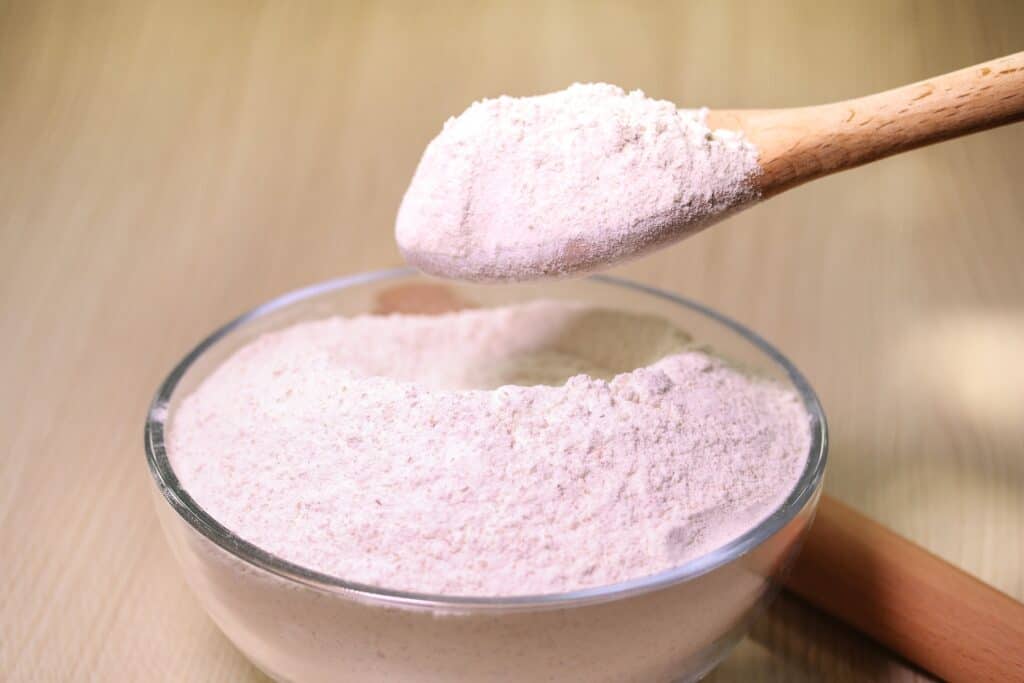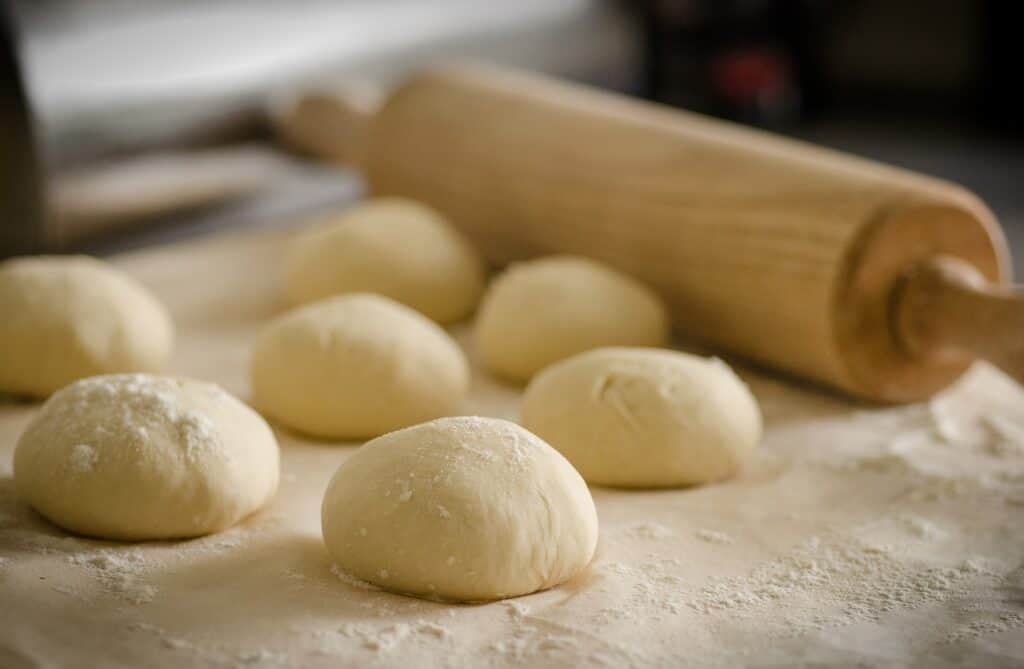Flour is one of the most basic ingredients used in foods around the world. As commonly as it is used, very few people actually know what flour is, let alone know the science behind it. If you want to perfect your bread, it’s critical that you understand the science behind flour.
Below, you will learn everything you need to know about the science of flour and how it functions in bread dough. There are four main questions we aim to answer in this guide:
- What is flour?
- How is flour made from grain?
- What is the science behind dough?
- What is the chemical function of flour?
Keep reading to learn the answers to all of these questions and more.

What Is Flour?
Simply put, flour is a powdered version of grain, most often wheat. That being said, the process of getting flour from grain takes more than simply grinding the grain down. Instead, you have to isolate parts of the grain in order to mill it into different types of flour.
How Is Flour Made From Grain?
In order to understand flour, it’s important to understand grain. There are three parts of a grain of wheat: germ, bran, and endosperm. Most flour types are specifically made from the endosperm, but some are made from germ and bran as well.
Other grain types, such as oat and barley, are built differently, but the vast majority of flour is made from wheat. So, we will focus on wheat grain specifically.
Endosperm vs Germ vs Bran
The endosperm, germ, and bran are all part of a single grain of wheat. The bran is the outside layer that protects the inside, and it is rich in fiber. In comparison, the germ is the inner layer, and it is rich in nutrients. The bulk of the kernel is the endosperm. It contains vitamins, minerals, protein, and starch.
How Different Types Of Flour Are Made
You make different types of flour by mixing together various amounts of endosperm, germ, and bran. For example, classic white flour is primarily made up of endosperm. In comparison, whole grain contains all three aspects of the grain.
How Are the Wheat Parts Separated?
Because different types of flour are made from different amounts of endosperm, germ, and bran, you have to separate the parts of the wheat grain in order to create the ideal type of flour. In order to do this, the grain must undergo milling.
There are several flour milling techniques, but the most common include the stone mill, roller mill, hammer mill, pin type, and impact type mill.
Knowing the details of these milling techniques isn’t as important as understanding that the milling technique involves irritating the grain so that the three parts of the wheat are broken apart. Then, the individual parts of the grain are separated from one another.
After the grain has been broken up, the flour will then undergo treatment, often including bleaching, maturing, malting, and enriching. At this point, the flour is ready to go to your kitchen for use in your cooking, after packaging of course.
What Is the Science Behind Dough?
Now that the flour is in your kitchen and ready to be used for cooking, how does flour transform into dough? Unfortunately, it’s difficult to give a quick answer since different types of flour impact how it acts within the dough. Because of this fact, we are going to focus on the science behind dough that uses wheat flour and yeast.

Endosperm Provides Starch For the Yeast
Two of the most important ingredients in classic bread are flour and yeast. As we’ve already learned, most white flour for bread purposes is primarily made of the endosperm. The reason for this is that the endosperm, which contains a lot of protein and starch, provides food for the yeast to eat.
Yeast Releases Carbon Dioxide Gas
As the yeast eats the starch within the flour, carbon dioxide gases are released. It is this gas that is responsible for bread rising.
Gluten Creates a Net For the Carbon Dioxide
The proteins within the flour serve an important function too. The two proteins within wheat flour are glutenin and gliadin. When you mix these proteins with water, gluten is formed.
The purpose of this gluten is to create a net that captures the carbon dioxide from the yeast. This net strengthens the texture of the dough and allows it to take shape.
What Is the Chemical Function of Flour?
One question still remains: what exactly is the chemical function or purpose of flour? In other words, why does bread need flour? Fortunately, this question is incredibly easy to answer.
The whole purpose of flour is to simply provide a structure for your bread or baked goods. More specifically, it is the gluten that creates a net and stretches to create the structure of your product.
Final Thoughts
There you have it! Flour is made from grain and used to provide structure for your bread and baked goods. There’s a whole lot of science and chemical reactions that go into the process, but the process is worth it because it delivers delicious bread and baked goods.
